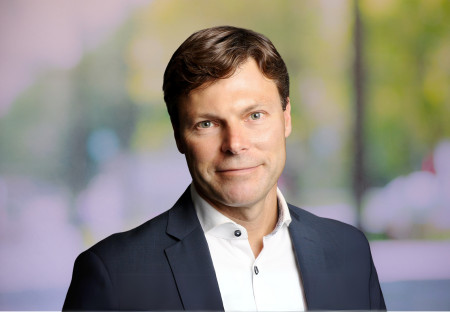Crafting a Winning Organizational Culture
Do Leaders Have It Backwards?
By Andrew Rush, Carpedia
Reading time: 6 minutes
Establishing a winning culture is more important than ever. To improve productivity and resilience, business leaders often look to create a company culture that enables success.
But maybe we have it backward. Perhaps instead, we should be building an organization’s productivity and resilience to unlock a winning culture.
In the following blog, we’ll discover how refining processes, removing barriers, and driving performance can naturally elevate a company’s culture.
The Essence of Company Culture
Every business has a culture, typically one that was implanted or influenced by the organization’s CEO or Founder. Values can describe the culture, but the leader’s personality often shows its true essence. However, implementing “improvement projects” within the operations of a company often has a positive impact on its culture too.
Typically, leaders seek to capitalize on opportunities that provide immediate returns, such as streamlined operations, cost reduction, and elevated productivity. Company culture is not usually a primary target of operational improvement but rather a natural byproduct.
A fascinating trend has emerged over the more than 1400 improvement projects completed by Carpedia. Many leaders stated that changing their culture is the most important result of these projects, even if it wasn’t their main goal at first. Improved processes effectively shift business processes toward unity, a holistic understanding of objectives, and a collective striving for success.
How is this improvement achieved? The answer lies in the way the project is implemented, with three steps that lead to this type of outcome.
1. Removing Obstacles
Removing obstacles is crucial to improving culture. If employees see more success and supervisors are more effective at dealing with issues, there will naturally be an improvement in the overarching culture. Additionally, the microcosmic cultural offshoots—all the little interactions between humans that occur throughout the day—become more effective, leading to both cultural and performance improvements.
Case Study: Ford Motors
An example of this can be seen in the transformation of Ford Motor Company under the business leadership of Alan Mulally. When Mulally took over as CEO in 2006, Ford was struggling with inefficiencies and a fragmented corporate culture. He implemented the “One Ford” plan, which focused on removing silos and fostering collaboration across the company. By streamlining operations, improving communication, and encouraging transparency, Mulally removed obstacles that were hindering employee success.
This led to a significant improvement in the company’s culture, as daily interactions became more constructive and aligned with the company’s goals. The cultural shift not only enhanced performance but also played a crucial role in Ford’s financial turnaround, demonstrating how removing obstaclescan lead to both cultural and performance improvements.
Similarly, Carpedia consultants work to identify the obstacles hindering a team’s performance, engage with employees to understand their challenges, and execute a plan to address these issues and remove barriers that are holding the team back. This often includes streamlining processes, providing better tools and resources, and improving communication channels.
2. Shifting the Mindset
Resistance to change is natural, especially among long-standing employees. Carpedia employs “day-in-the-life” studies to gain an in-depth understanding of employee perspectives and to better anticipate the implications the proposed changes will have on them. This thoughtful approach has a natural disarming effect, whereby it not only addresses potential resistance but also fosters an environment where every team member gains a deeper appreciation for their role in the collective success of the organization.
Case Study: Procter & Gamble
Procter & Gamble (P&G) employed this type of approach during their organizational transformation. They recognized the potential resistance from long-standing employees who were accustomed to established ways of working. To address this, change agents observed and engaged with employees in their daily routines, allowing the company to identify potential challenges and anticipate the impact of proposed changes.
This approach not only helped in tailoring the changes to better fit the employees’ needs but also demonstrated a genuine commitment to understanding and valuing their contributions. Employees felt more included and appreciated, which naturally reduced resistance to change. This process encouraged team members to see their roles within the broader organizational context.
Understanding how everything fits into the big picture gets people thinking more at an organizational level and less at an individual level. This inherently improves the culture and employee well-being and productivity.
3. Providing the Right Data & Training
The third step involves refining processes further by providing leaders with new or improved metrics for better visibility and more informed decision-making. Access to accurate, timely, relevant data enables leaders to make decisions that align with the organization’s goals and drive performance improvements.
Case Study: General Electric
The transformation at General Electric (GE) under the leadership of Jack Welch demonstrates the importance of data-driven decision-making. GE focused on identifying and removing the defects in manufacturing processes by providing leaders with metrics that offered visibility into operations. By having access to accurate, timely, and relevant data, GE’s leaders were able to make more informed decisions that aligned with the company’s strategic objectives.
This data-driven approach not only improved efficiency and product quality but also drove significant performance improvements across the organization. The emphasis on metrics and data visibility became a cornerstone of GE’s culture, contributing to its reputation as one of the business leaders in operational efficiency.
Enhancing problem-solving capabilities also requires that teams are equipped with the skills necessary to identify variances, implement effective solutions, and learn from each experience. This ensures small wins are occurring and frustrations are being alleviated more often and more effectively.
Case Study: Toyota
A great example of enhancing problem-solving capabilities can be seen in Toyota’s emphasis on continuous improvement, which empowers employees at all levels to identify and solve problems as they arise. Toyota enables employees to identify variances in the production process, implement effective solutions, and learn from each experience. This approach not only addresses issues promptly but also fosters a culture of proactive problem-solving.
Together, these steps make up a holistic approach that not only improves processes but also leads to a significant uplift in a company’s culture—a testament to the power of combined actions improving in concert.
The Symbiotic Relationship Between Culture and Operations
Does culture become misaligned when the operations are not running smoothly, or does efficiency suffer when culture is not aligned?
They’re both causational. If a culture is bad, it’s very hard to have an operation that is good. It can work on a short-term basis because inefficiencies can be masked by strong demand. But down the road, a disruption in the market or the drain of institutional knowledge that results from burnout and its corresponding turnover will dissolve that advantage.
A winning culture is a seed that takes root and spreads. When individuals within an organization experience more successes, solve more problems, and see improvements in handling day-to-day challenges, a positive cultural shift occurs. Hundreds of small interactions that occur throughout any given day amplify this evolution—each becoming more effective as barriers are removed and progress is visibly tracked. The company’s culture and its performance metrics are enhanced in tandem.
Operational excellence can ultimately create a vibrant, positive work environment. In doing so, we unlock a ‘back door’ to cultural transformation, where operational improvements catalyze a broader cultural shift within the organization leading to enhanced business success.
About the Author
Andrew Rush is a seasoned business leader and established thought leader known for his innovative and practical approach to operational management. He has a people-centric, impact-driven approach to business transformation that combines his career experiences as both a consultant and business leader for small, medium and large businesses.
His insights and methodology have caught the attention of prestigious platforms such as Forbes Magazine, and Andrew is a frequent guest on webinars and podcasts, where he inspires audiences and guides leaders.
Andrew’s career journey has provided him with a multi-dimensional perspective and practical experience in leadership. Starting as a consultant in 1997, he went on to lead various companies in the building materials, aluminum, and construction industries, assuming key roles such as Vice-President of Operations, Vice-President of Sales, General Manager, and President. His leadership dexterity has been demonstrated in both unionized and non-unionized environments, as well as in steering both publicly traded and privately held firms towards success.
Andrew has a consistently demonstrated ability to amplify business outcomes by fostering team collaboration and cultivating effective senior leadership. Beyond his corporate achievements, Andrew is an accomplished speaker and trainer, regularly sharing his insights to empower business leaders globally.

Take your organizational culture and leadership development to the next level with a TEC Canada membership, where you can learn more about key strategies from thought leaders such as Andrew.
Become A Member
"*" indicates required fields




